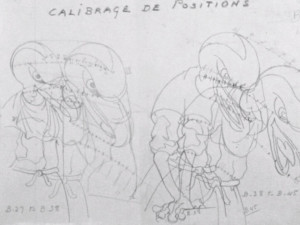
A short film in which Émile Gallet demonstrates how to animate a walk cycle and illustrates the inner workings of a gasoline engine. The film also includes studies and designs for La Legende de Saint Nicholas (1949), as well as footage from Ducky 'n Busty (1937).
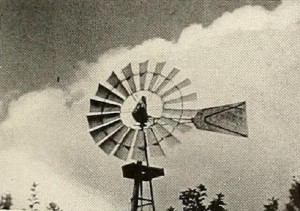
"Simplicity and directness mark How to Use Filters, made by Kenneth F. Space for the Harmon Foundation. A teaching film must be free from overburdening theory. Mr. Space knows when to forget the deep dark secrets of theory and when to speak out about the actual, practical facts. His film was well filmed, and the subject matter was chosen to present the case clearly and in an interesting fashion. The user of a movie camera will learn more about filters from seeing this film than he can gain from reading many pages on the subject. It tells just what to expect from various filters and stresses the results obtained from their use more than it does the reasons why they work. Mr. Space's movie is one of the few educational films which are simple enough to be effective." Movie Makers, Dec. 1940, 604.
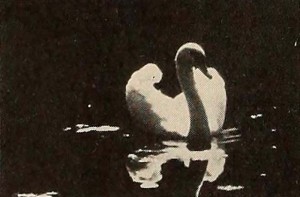
"A milestone in the pedagogy of personal movie making, How to Use Your Camera, produced by the Harmon Foundation and photographed by Kenneth F. Space of that organization's staff, is a simple and straightforward exposition of the fundamentals of camera operation. This picture, reel one in a forthcoming series of releases to be entitled You Can Make Good Movies, is marked by attractive and technically superior photography. The remarkable restraint exercised in planning and directing the picture is its outstanding virtue because, although the principles of camera manipulation covered are elementary and brief, they are crystal clear. It would have been easy to have covered too much ground in a one reel film of a technical procedure, and, in restricting the scope of the picture, the producer showed astonishing understanding of both the movie medium and of the technique of teaching movie making. The photography is beautiful, the sequencing and editing exquisite gems, in themselves examples of good technique, and the titling is excellent. Movie Makers will be impatient to see the companion reels in the series, and the Harmon Foundation deserves acclaim for its pioneering work." Movie Makers, Dec. 1938, 618.
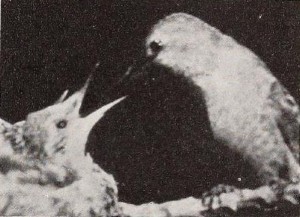
"In making Hummingbird, Dr. Richard Cassell has succeeded admirably in producing a film of absorbing interest and, at the same time, one of distinct educational value. In a straightforward and workmanlike manner, he presents the life story of a family of these minute winged creatures in close shots and extreme closeups. The film treatment is simple and direct, stressing the growth and habits of the birds. The patience that must go into the production of a film of this type never shows, but Dr. Cassel's movie making skill is apparent in every scene. While the technical excellences of exposure and composition are notable in this film, the most amazing achievement is its lighting. Obviously difficult even to film, many of the closeups appear almost to have studio lighting. The titling is clean cut and well integrated and the cutting is deftly paced, this quality being helped by the wide range of viewpoints and an excellent choice of camera positions." Movie Makers, Dec. 1941, 565-566.
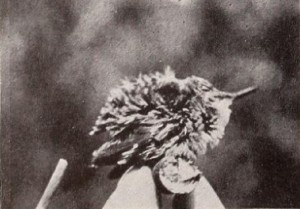
"Shakespeare tells us that Owen Glendower said that he could summon spirits from the vasty deep; Archimedes boasted that, with the right kind of lever and fulcrum, he could move the Earth. But, did either of them ever tackle hummingbirds? E. R. Hoff, in Hummingbirds, not only tackled them but, apparently, he so charmed them that they flew where and when he wanted. As a result, whoever sees his film will know more about the ways of the almost invisible aerial dynamo than he has ever believed that anybody could know, short of being a hummingbird himself. This film is not only a revelation of incredible patience and determination, but it is cinematographically an accomplishment of genuine intelligence. Mr. Hoff has called our attention to the control of composition, sequence and background quality, evidently because he feared that they might be taken for granted. It is precisely because of these factors that Hummingbirds placed in the Ten Best. It is beyond the limits of this rating of Movie Makers to attempt to find an adequate laurel for the superb achievement of the naturalist which Mr. Hoff is. At any rate, the next time we see a flash of color on a summer afternoon, we can say, "What now, little bird? We know what makes you go round." " Movie Makers, Dec. 1940, 600.

"In August 1980, Robbins Barstow and his wife Meg, of Wethersfield, Connecticut, USA, went on a week-long trip to Newfoundland, Canada, to go whalewatching in the North Atlantic waters of Trinity Bay. Join them for exciting, on-the-surface, close encounters with giant humpback whales, and dramatic sightings also of finback and minke whales." Archive.org
"The Hungry Kook Goes Bazook is a zany title and zaniness continues throughout the film. This is a motion picture one would think could not be made. Even after you have seen it, you wonder whether this was a film with real live people in it or just another cartoon. Ed McWatters simply stole a cartoon and made it with real live people; that's how simple it is" PSA Journal, Oct. 1968, 48-49.
Total Pages: 299